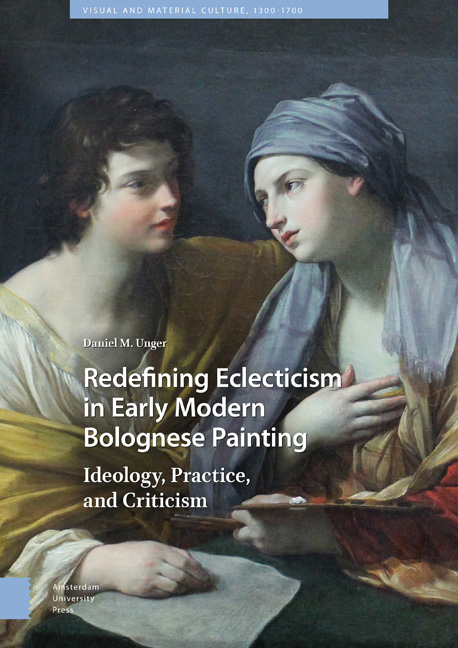Summary
Abstract
Chapter Three is devoted to the implementation of eclecticism in artistic practice. It opens with an analysis of how the celestial and the terrestrial realms are represented in different styles within the same composition. This analysis will be followed by the examination of the differentiation between different types of saints—those whose facial features are known, and those early saints who left no traces of their likeness. This concern will be elaborated upon by attending closely to Reni's portrayal of the sixteenth-century St. Carlo Borromeo, in comparison to the portrayal of historically earlier saints. The third part of this chapter will focus on other non-assimilated eclectic paintings by this book four protagonists—Ludovico Carracci, Annibale Carracci, Guido Reni, and Guercino.
Keywords: Terrestrial and celestial realms, St. Carlo Borromeo, Ludovico Carracci, Annibale Carracci, Guido Reni, Guercino
In the following chapter, I consider several examples of non-assimilated eclecticism by the four leading Bolognese painters—Ludovico, Annibale, Reni, and Guercino. These paintings accord with Paleotti's ideas as expressed in his Discorso, revealing these ideas to have been, for the most part, stylistically applicable in practice. The first concern addressed by these painters is the dialectic of the celestial and the terrestrial realms and the distinction between virtue and vice. The second concern involves an emphasis on the distinctive visual characteristics of saints whose likeness is known, and their differentiation from saints about whose visual appearance we know nothing. Paleotti demanded that painters depict saints in this second category as naturally as possible without resembling a living person. Some of the paintings examined below were commented on either by Malvasia or by modern scholars as containing more than one style. In addition, I will examine a number of paintings that have never been considered in this context yet are most revealing in terms of non-assimilated eclecticism.
It is important to note, however, that the use of an eclectic method in the paintings discussed below by no means indicates that all the works produced by painters affiliated with the Bolognese school of painting can be designated as eclectic. Therefore, the last section in this chapter will be devoted to eclectic attitudes discernible in other Bolognese paintings that do not correspond directly to Paleotti's religious ideas.
- Type
- Chapter
- Information
- Redefining Eclecticism in Early Modern Bolognese PaintingIdeology, Practice, and Criticism, pp. 105 - 158Publisher: Amsterdam University PressPrint publication year: 2019



